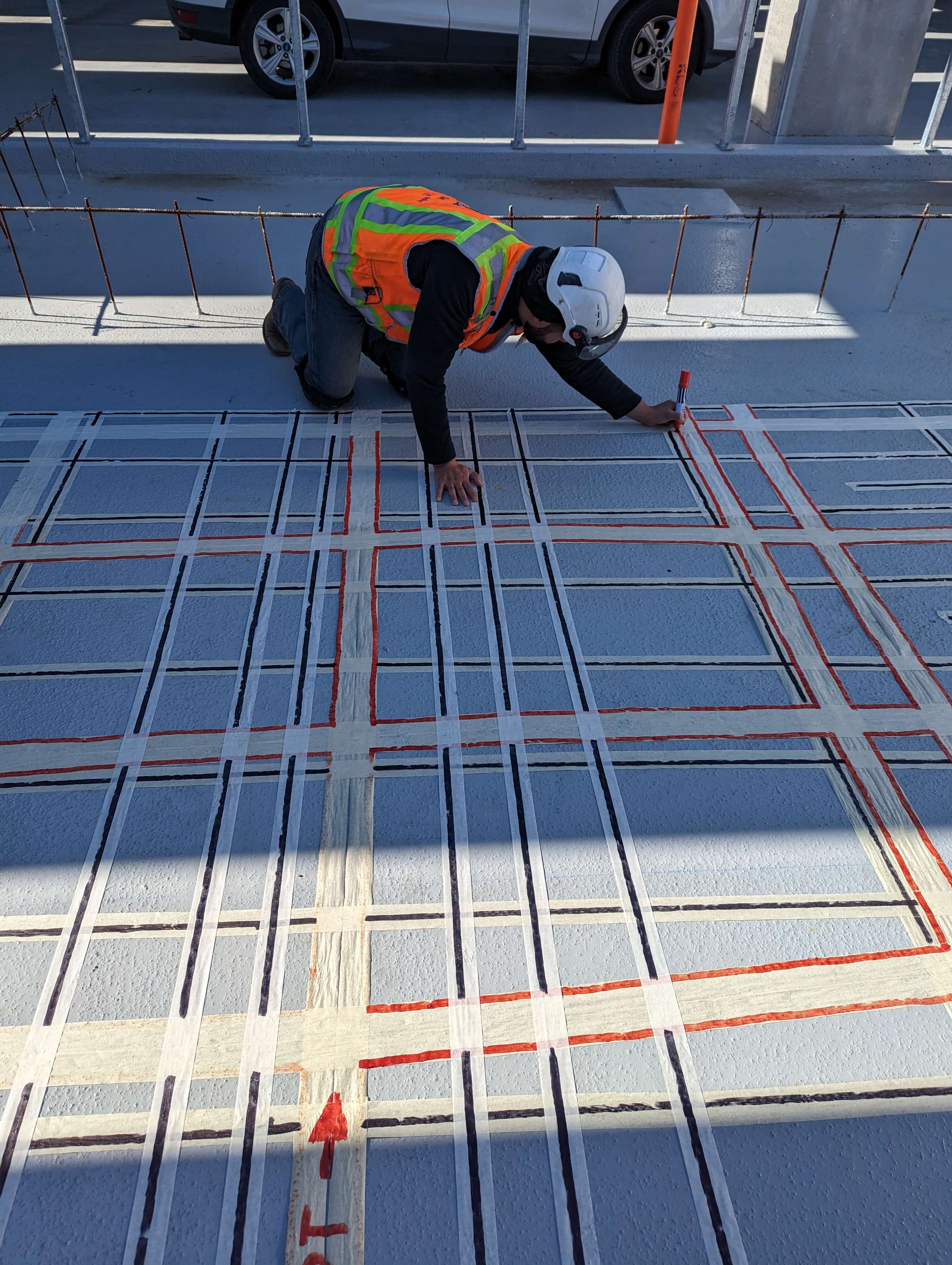Comprehensive Insights right into Concrete Scanning Procedures
Comprehensive Insights right into Concrete Scanning Procedures
Blog Article
Introduce the Transformative Power of Concrete Scanning in Making Best Use Of Performance and Safety
Concrete scanning has emerged as a vital device in the building sector, using unequaled advantages in boosting task efficiency and making certain safety standards. The transformative power of concrete scanning exists in its ability to provide comprehensive insights and real-time information, reinventing exactly how tasks are prepared and executed.
Value of Concrete Scanning
Guaranteeing the architectural honesty and safety and security of building and construction projects begins with the important step of carrying out comprehensive concrete scanning. Concrete scanning is a non-destructive method made use of to identify and map subsurface components within concrete frameworks. This procedure is essential in recognizing possible threats, such as rebar, post-tension cables, and avenues, that might be concealed within the concrete. By using advanced modern technologies like ground-penetrating radar (GPR) and electromagnetic induction, construction groups can accurately situate these components without triggering any kind of damage to the structure.
The importance of concrete scanning can not be overstated, as it plays an important function in stopping mishaps, minimizing job hold-ups, and making sure the long-lasting durability of the building and construction. By identifying possible hazards before the building and construction stage starts, home builders can carry out suitable safety steps and make educated decisions regarding the layout and execution of the job. In addition, concrete scanning aids in enhancing project timelines and budget by preventing unforeseen expenses and hold-ups that may occur due to unexpected obstructions within the concrete. Eventually, spending in complete concrete scanning is an aggressive strategy that boosts both efficiency and security in building and construction tasks.
Just How Concrete Scanning Functions
Concrete scanning operates as a critical tool in building jobs by utilizing sophisticated innovations to spot and map subsurface components without creating architectural damage. Ground Permeating Radar (GPR) and Electromagnetic Induction (EMI) are 2 primary techniques made use of in concrete scanning. GPR works by producing high-frequency radar pulses right into the surface, which recuperate when they experience subsurface objects or spaces. The time taken for the signal to return indicates the deepness and place of the items. EMI, on the various other hand, makes use of electro-magnetic fields to recognize variations in material compositions, such as recognizing rebar or channels within concrete frameworks.
During the scanning process, the data gathered is assessed in real-time, enabling immediate identification of potential dangers or barriers under the surface area. By using these sophisticated modern technologies, concrete scanning dramatically lowers the danger of expensive damages and injuries on building websites.
Advantages of Concrete Scanning
One of the primary advantages of concrete scanning is the capability to spot and situate ingrained objects such as rebar, post-tension cords, and conduits properly. Concrete scanning helps in planning and making much more effectively, as it supplies specific details regarding the place and depth of structural components.

Instance Researches: Concrete Scanning Success

In an additional case, a building and construction company used 3D concrete scanning to analyze the condition of maturing concrete structures in a historical structure. The detailed scans offered beneficial understandings into the level of deterioration and aided prioritize upkeep initiatives properly. By proactively dealing with areas of problem identified through scanning, the company had the ability to expand the lifespan of the structure and make sure owner safety.
These instance researches emphasize the transformative power of concrete scanning in enhancing efficiency, accuracy, and safety in building and construction projects.
Executing Concrete Scanning in Projects
Executing sophisticated scanning modern technologies throughout building and construction projects has become increasingly necessary for boosting accuracy and security. By integrating concrete scanning into project preparation and implementation, building and construction groups can recognize possible threats, such as rebar or post-tension wires, concealed within concrete frameworks. This aggressive strategy lessens the danger of mishaps, delays, and pricey rework, ultimately causing much more efficient project timelines and budget plans.
To carry out click to find out more concrete scanning effectively, project supervisors need to work together closely with experienced scanning specialists to identify the most ideal scanning methods for the specific task demands. Engaging scanning professionals from the onset of a task allows the group to create comprehensive scanning strategies that deal with vital locations of problem and make certain comprehensive information collection.
In addition, integrating concrete scanning into routine project operations can improve decision-making processes, as real-time check data gives immediate understandings into the condition of concrete frameworks - Concrete Scanning. This data-driven approach promotes notified analytic and allows groups to make adjustments quickly, cultivating a culture of effectiveness and safety and security throughout the job lifecycle

Conclusion
To conclude, concrete scanning plays an important duty in enhancing performance and safety in building tasks. By making use of advanced innovation YOURURL.com to identify and map out underlying frameworks within concrete, this procedure aids to avoid expensive errors, make certain architectural integrity, and reduce dangers on website. With the capability to reveal surprise aspects and supply exact information, concrete scanning confirms to be a valuable tool for optimizing job end results and taking full advantage of general success.
Concrete scanning is a non-destructive technique utilized to find and map subsurface components within concrete frameworks. Additionally, concrete scanning aids in optimizing project timelines and budget by avoiding unexpected prices and hold-ups that may emerge due to unexpected blockages within the concrete. One significant situation research study involves a large improvement task where concrete scanning played a critical duty in making sure project success.In another case, a building business utilized 3D concrete scanning to evaluate the condition of maturing concrete frameworks in a historic building. By incorporating concrete scanning right into project preparation and implementation, building and construction groups can determine potential hazards, see it here such as rebar or post-tension wires, hidden within concrete structures.
Report this page